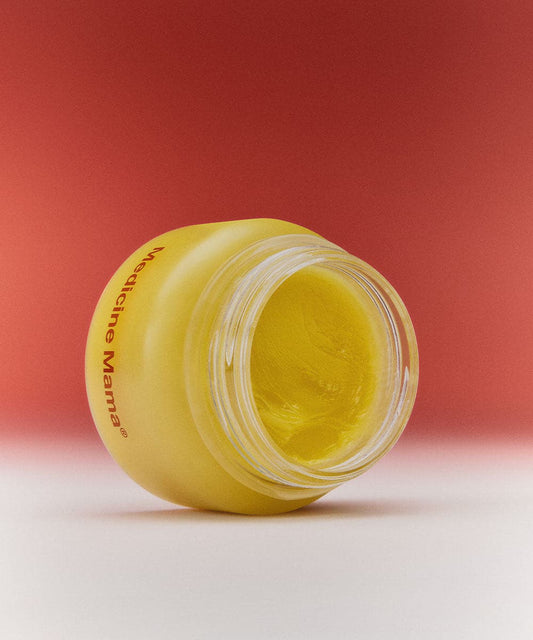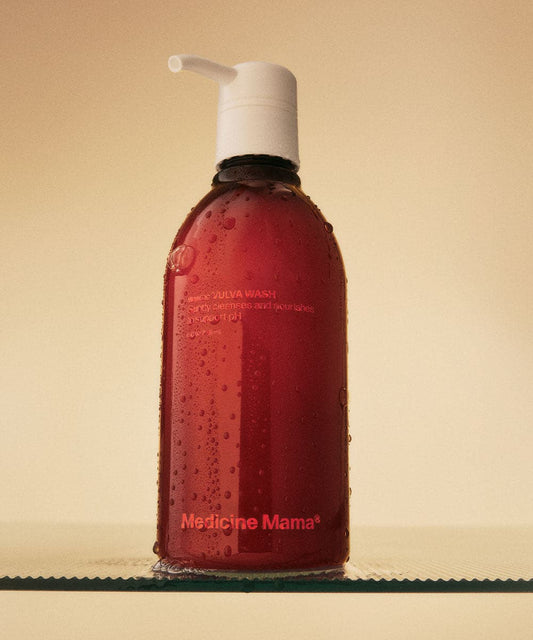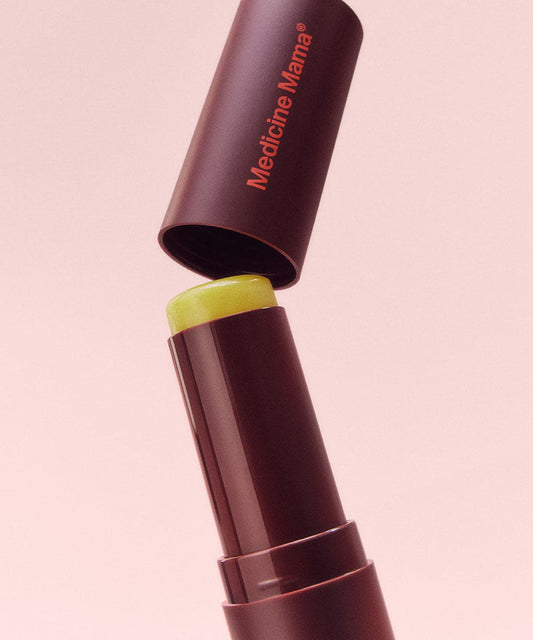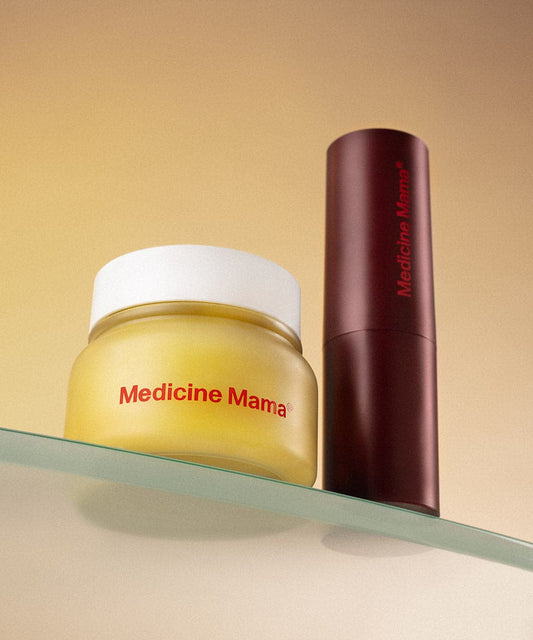Reviewed by | Melinda Hany, Registered Nurse
Key Takeaways
- Vulvodynia is persistent external vulvar pain without a visible cause, and it’s more common than most people realize.
- The pain can feel like burning, stinging, or rawness and may flare up with activities like sex, sitting, or wearing tight clothes.
- While there’s no one cause or cure, support is possible through pelvic floor therapy, lifestyle tweaks, and vulva-friendly skin care.
Ever feel a weird burning, stinging, or raw sensation on your vulva that just won’t quit? You’ve ruled out an infection. You’ve tried switching soaps. Maybe your doctor even ran tests and came back without a clear answer.
At Medicine Mama, we hear stories like this all the time. You know your body. You know when something is off. And when your vulva is sending up red flags with no clear reason, it’s not in your head and you’re not being “dramatic.”
What you’re experiencing could be something called vulvodynia. And while it’s wildly underdiagnosed, it’s not rare. It just doesn’t get talked about enough. Especially not in a way that feels helpful, validating, and actually understandable.
So let’s change that. In this article, we’re breaking down what vulvodynia is, what it can feel like, and why so many women go years without answers. We’ll also cover simple things that might help you start feeling more like yourself again, because your vulva deserves real care, not confusion.
What Is Vulvodynia?
Vulvodynia is chronic vulvar pain that doesn’t come with a tidy diagnosis or visible explanation. No infection. No rash. No test that neatly explains why it hurts, but the pain is very real.
And yes, we said vulvar pain. That’s the external part: the skin and tissue you can see and touch, including the labia, clitoris, and vaginal opening. Vulvodynia isn’t happening inside the vagina. It’s happening on the outside, where it can mess with your comfort, your confidence, and your day-to-day life in ways that feel hard to talk about.
What Does Vulvodynia Feel Like?
Honestly? Unpleasant and frustratingly hard to describe, especially when it doesn’t look like anything’s wrong.
A lot of people say it feels like they’re wearing sandpaper underwear or like their vulva has a sunburn that never really goes away. The skin might sting or burn even when nothing’s touching it. Sex can hurt. So can sitting for too long. Even wiping or walking in fitted clothes can be enough to trigger that zingy, sharp irritation that makes you wince.
The pain might be all over, or it might zero in on one spot, like right near the clitoris or the vestibule. For some people, it comes and goes, flaring up with certain activities or during high-stress weeks. For others, it’s more constant, making everyday things feel stressful or uncomfortable when they really shouldn’t be.
So, What Causes Vulvodynia?
There’s no one-size-fits-all answer. Vulvodynia doesn’t have a neat origin story, and that’s part of what makes it so maddening. You can feel like you’re doing everything “right” and still be in pain.
That said, there are some common threads. For starters, nerves in the vulvar area can become hypersensitive, sometimes after repeated irritation, past infections, or even no clear trigger at all. Think of it like your body going into overprotective mode and not knowing how to turn it off.
Hormonal changes may play a role, too. Lower estrogen (like during menopause or postpartum) can affect the texture and comfort of vulvar skin, making it more reactive. For others, tight pelvic floor muscles might be a piece of the puzzle, especially if there’s tension or guarding from past pain or trauma.
And then there’s the brain-body connection. Stress, anxiety, and even how your body processes pain can all shape how intense and persistent symptoms feel. It’s real. It’s frustrating. And it’s not your fault.
When To Talk to a Provider
If your vulva is hurting — burning, stinging, aching, or just feeling off — and it keeps happening or gets in the way of things like sex, exercise, sleep, or just existing comfortably in your body, it’s time to talk to your doctor. You don’t need to wait until it’s unbearable. And you definitely don’t need to check every box or explain it perfectly to deserve support.
You might hear “everything looks normal,” and that can be discouraging. But remember: vulvodynia often doesn’t show up on swabs or exams. That doesn’t make it less real. You’re not overreacting. You’re being proactive.
Start by bringing it up with a provider you trust. If they dismiss you, keep going. Look for someone who’s knowledgeable about pelvic pain or vulvar health (bonus points if they have experience with menopause, postpartum, or sexual wellness).
And if they don’t have answers right away, they should be willing to help you find someone who does, like a pelvic floor therapist or vulvar dermatologist.
What Can Help?
If you’re dealing with vulvodynia, there isn’t one single fix, but there are tools, habits, and approaches that can help you feel more in control and more comfortable. Everyone’s body is different, so think of this as a menu of ideas to explore, not a checklist you have to follow perfectly.
Try Pelvic Floor Physical Therapy
A lot of people assume pelvic floor PT is just for postpartum recovery or incontinence, but that’s not the full story. These specialists can help assess how your pelvic muscles are behaving (or misbehaving) and teach you how to release tension, build strength where needed, and rewire how your body responds to pain.
Take Care of the Skin You Can See
When your vulva’s already feeling raw or reactive, the last thing it needs is a “feminine wash” that belongs in the trash. Skip the scented wipes, sudsy shower gels, or anything with mystery ingredients and marketing fluff.
Instead, go for products that actually get vulvar skin, like gentle, fragrance-free cleansers made specifically for the external area. Follow that up with a hormone-free moisturizer that soothes and hydrates irritated, dry, or delicate skin.
Ditch the Tight Stuff Sometimes
You don’t have to break up with leggings forever, but if your vulva is feeling tender, give it a little breathing room. Go for looser cotton underwear. Opt for softer seams. Maybe skip that hour-long bike ride in compression shorts. Little swaps can make a big difference when you’re trying to reduce friction and discomfort throughout the day.
“It doesn’t always have to be permanent, either. Sometimes your body just needs a little time to rest and reset. Everything in moderation,” notes Melinda Hany, Registered Nurse.
Frequently Asked Questions
Is vulvodynia the same as a yeast infection?
A yeast infection has a cause (candida overgrowth), shows up on tests, and typically comes with discharge or odor. Vulvodynia, on the other hand, doesn’t have an obvious trigger or visual signs. It’s persistent external pain that doesn’t go away with antifungals or standard treatments. If you’ve treated infections but still feel pain, it might be time to look into vulvodynia.
Can vulvodynia go away on its own?
Sometimes, it eases up, especially if it’s linked to a short-term trigger like stress or postpartum hormone shifts. But often, it sticks around without some kind of support, whether that’s physical therapy, skin care, or lifestyle tweaks.
Can you have vulvodynia and still have a healthy sex life?
Absolutely, but it might take some adjusting. Sex might look different for a while (or involve more lube, breaks, or new positions), and that’s okay. Some people find that pelvic floor therapy or addressing vulvar dryness makes intimacy way more comfortable.
Your Vulva Deserves Better
Vulvodynia is real. It’s frustrating. And it’s often ignored or misunderstood, especially when nothing “shows up” on a test. But just because it’s invisible doesn’t mean you have to suffer in silence. You deserve answers. You deserve support. And most importantly, you deserve to feel at home in your own body again.
At Medicine Mama, we’re here to change the way vulvar health is talked about with clarity, care, and zero shame. Whether you’re navigating new discomfort or just want to stop feeling dismissed every time you ask a question, we’ve got your back.
Comfort shouldn’t be confusing. Let’s take the guesswork out of it together.
Disclaimer: The information provided on this blog is for general informational and educational purposes only. All content, including text, images, graphics, and other material, is not intended to be a substitute for professional medical advice, diagnosis, or treatment.
Always seek the guidance of your physician or other qualified health professional with any questions you may have regarding a medical condition, treatment, or wellness program. Never disregard the advice of a medical professional or delay in seeking it because of something you have read on this website.
Sources:
Vulva: Location, Anatomy, Function, Conditions & Care | Cleveland Clinic
Mind-body connection is built into brain, study suggests | WashU Medicine



